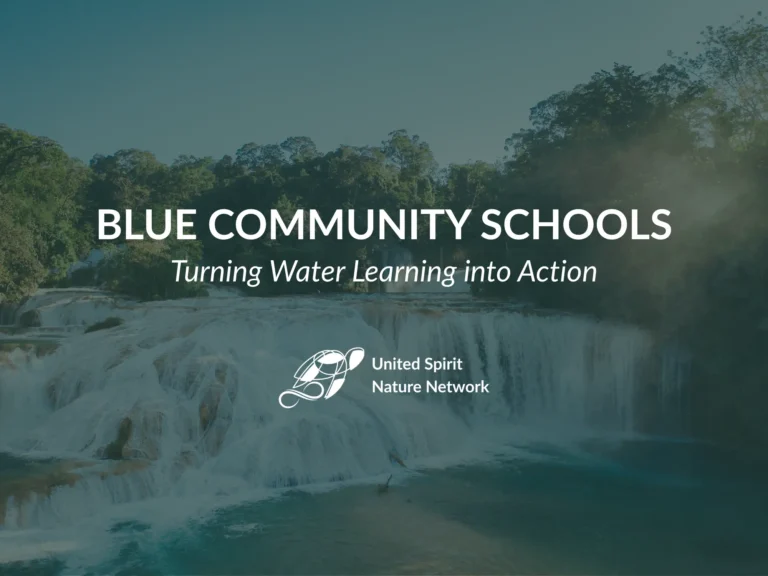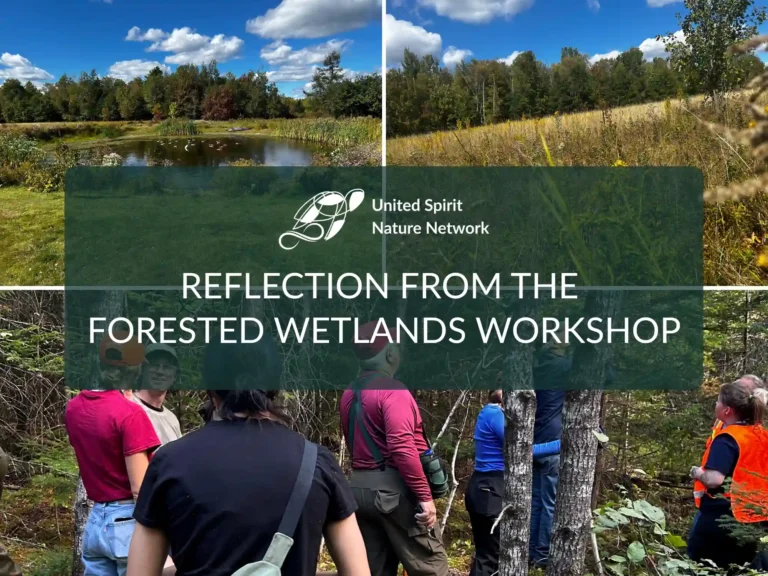🌿 Where the Trees Whisper Back: Youth Step into a Living Forest Classroom in New Maryland
On a warm, golden morning in July, the forest of Oakland Farm awoke to laughter, footsteps, and the curious gaze of youth ready to listen—not just with their ears, but with their hearts. Beneath a cathedral of hardwood giants, a new generation of forest stewards gathered for the Youth Forestry Inventory Training, hosted by the United Spirit Nature Network (USNN) with support from the New Brunswick Environmental Trust Fund (ETF), as part of the Preserving Black Ash Project.
Their mission? To walk gently among the trees, to ask questions in the language of leaves and lichens, and to witness the sacred details of a living system often overlooked in the rhythm of daily life.


🌲 Into the Heart of the Forest
The hike began under a perfect sky, the kind that makes the whole canopy glow. Youth between the ages of 13 and 18 stepped into the forest not as visitors, but as learners in a story older than any textbook. The land welcomed them with old hardwood stands, mossy wetlands, and a gentle stream tracing the curves of time.
Each participant was given tools, both physical and philosophical. They held increment borers and telescopes in their hands and the responsibility of inquiry in their minds. Guided by professional instruction and ecological wisdom, they learned how to see a tree beyond its bark: to measure its diameter at breast height (DBH), to estimate its age, and to understand its health through the shine of its leaves and the fullness of its crown.
Some trees, like the White Ash, stood as steady elders in the inventory plots. Others, like the Black Ash, appeared in sacred surprise, two trees quietly rooted at the forest’s edge, symbols of resilience and cultural legacy. “It felt like the trees were telling us their names. And all we had to do was listen,” said one participant, brushing lichen from their palm.






🍃 Lessons Etched in Bark and Breath
Through structured sample plots, the youth mapped and catalogued their forest teachers. Every tree was a character. Every twig and thorn a sentence in a much larger story.
- They marveled at the American Elm, its coarse leaves like nature’s own sandpaper, proof of adaptation and strength.
- They examined Eastern White Cedar, Canada’s only native cedar, feeling the sacred scales between their fingers and learning of its softwood classification.
- Invasive buckthorn reared its thorny presence, prompting lessons about ecological imbalance and the human hand in forest health.
The youth met a dying balsam fir, its trunk oozing with sweet resin, nature’s own lifeblood. They learned how to assess tree vigor and recognize signs of forest stress: yellowing canopies, crown dieback, and the quiet toll of climate and pests. In the wetland’s gentle shadows, they discovered nature’s signals: red maple, sensitive ferns, horsetail, and the mighty Lungwort lichen, a neon-green prophet of clean air, thriving on the flank of a strong Ash tree. Each finding was a gift. A story. A reason to protect.



FUN FACT
Three pictures below shows how we used an increment borer. This tool is used to determine the age of a tree.



🌱 A Sacred Exchange: Knowledge and Belonging
More than training, this was a rite of passage. For some, it was their first time touching a tree with purpose. For others, it was a return to something they didn’t know they’d lost. The forest was not just a setting—it was a mentor, a keeper of traditions, and a mirror of our collective wellbeing.
They did not just learn forestry skills, they learned how to become keepers of the forest. And in doing so, they stepped into the long and beautiful braid of Indigenous conservation, where the knowledge of science and the wisdom of spirit move hand in hand.
As part of the Preserving Black Ash Project, this training empowered youth to think beyond the moment, to imagine careers in forestry, to adopt citizen science as a daily practice, and to understand the land not just as resource, but as relative.
“When I touched the bark of the Black Ash, I felt like I was holding hands with history,” whispered one youth.






🌾 A Future Planted in Story
Let this training be a seed. A story retold in circles and classrooms, family tables and trail walks. For USNN, this is just the beginning. In protecting Black Ash, we are protecting identity, language, and the woven threads of generations.
We invite you to follow this journey, to support the weaving of land and youth, of elders and science, of tradition and innovation. Because when we walk the forest with open hearts, the trees always whisper back.
🔗 Learn more about Preserving Black Ash
📅 Full Event Details









